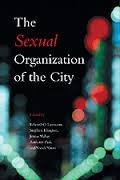 The Sexual Organization of the City
The Sexual Organization of the City
Edited by Edward O. Laumann, Stephen Ellingson, Jenna Mahay,
Anthony Paik, and Yoosik Yim
University of Chicago Press
418 pages, $35.
HBO’s Sex and the City gave us a New York that was essentially a sexual playground for upwardly-mobile white women in their thirties—a fantasy that Chicago sociologists Edward O. Laumann and his colleagues hope to debunk, at least in part, in The Sexual Organization of the City. In their view, sex in the city occurs at the conjunction of many opportunities and constraints that lead the individual toward some sexual outlets and away from others. Sex in the city is not a free-for-all, but nor is it totally proscribed by institutions such as the church or the family.
The findings in this study are based on results from the Chicago Health and Social Life Survey (chsls) conducted from 1995 to ’97, which was designed to assess how people met their sexual partners within a local context. The chsls surveyed individuals across four Chicago areas designated as Shoreland, Westside, Erlinda, and Southside; most gay and lesbian informants were located within the neighborhood known as Shoreland.





